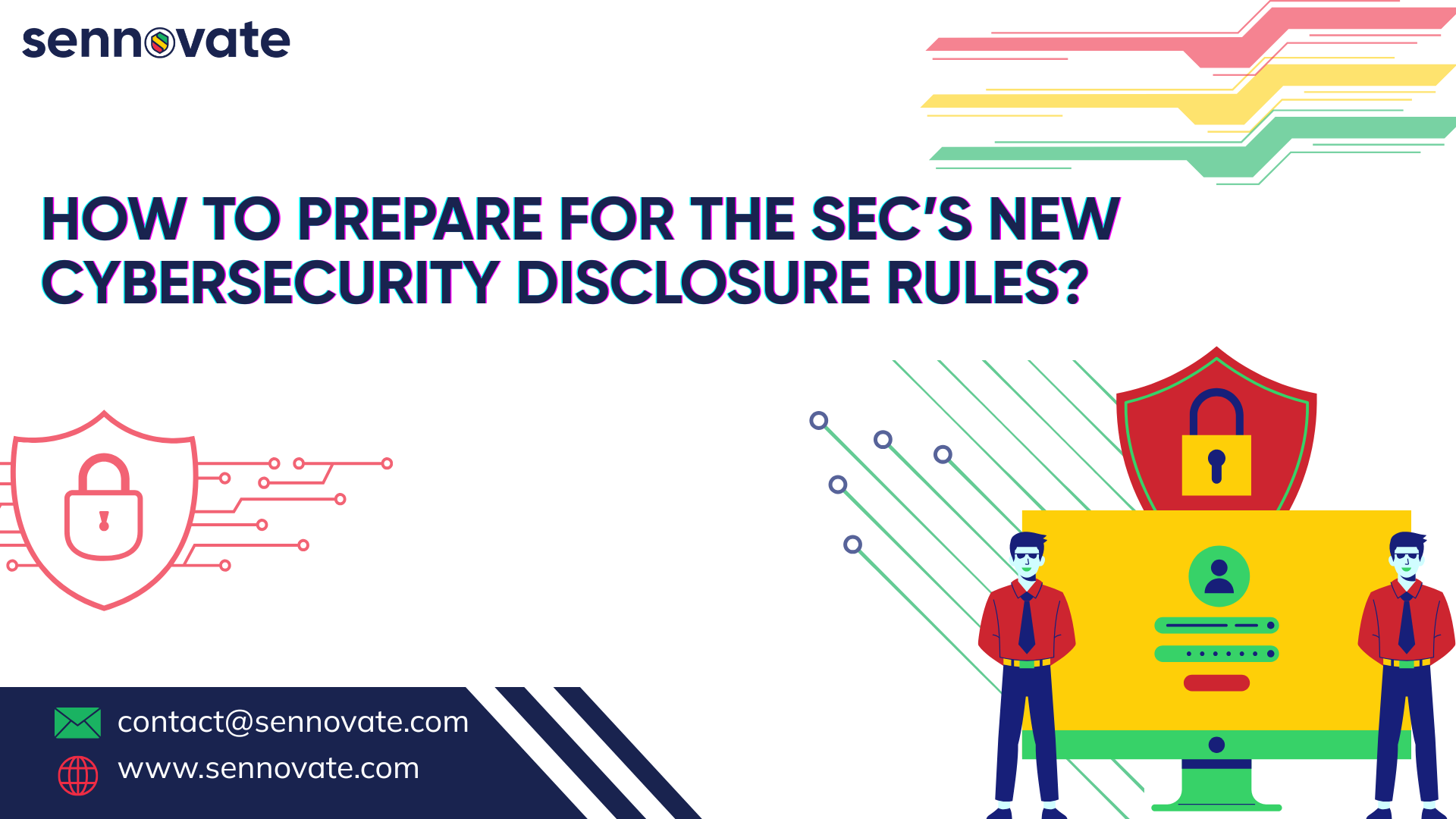
How to Prepare for the SEC’s New Cybersecurity Disclosure Rules?
The Securities and Exchange Commission (SEC) has implemented extensive cybersecurity disclosure regulations that will transform corporate accountability in 2025. With 87% of public companies not reporting material breaches within four days (Deloitte 2024), these rules necessitate complete transparency—or risk facing fines of up to $35 million for each infraction.
For public companies, operators of critical infrastructure, and third-party vendors, adherence is mandatory. This guide outlines:
✔ Essential SEC requirements coming into effect in 2025
✔ A detailed preparation roadmap
✔ Real-life instances of penalties for non-compliance
✔ How Sennovate’s cybersecurity services facilitate smooth compliance.
1. The SEC’s 2025 Rules: What’s Changing?
Four Critical Mandates
| Rule | Deadline | Requirement |
| Material Breach Disclosure | 4 business days | Disclose material cyber incidents via Form 8-K |
| Annual 10-K Reporting | Fiscal year 2025 | Detail: • Cyber risk management strategy • Board expertise • Third-party risks |
| Board Accountability | Immediate | Boards must certify cybersecurity expertise (or explain gaps) |
| Vendor Incident Chaining | Ongoing | Disclose if third-party breaches materially impact operations |
📌 Penalties:
- $35M for false/missing disclosures
- Class-action lawsuits from shareholders
- Delisting risk for repeat violations
2. What Constitutes a “Material” Incident?
The SEC characterizes materiality as:
“A significant probability that a reasonable shareholder would regard it as important.”
Key Factors of Materiality
✅ Financial Consequences (e.g., ransomware payments, declines in stock value)
✅ Sensitivity of Data (Personally Identifiable Information, trade secrets, data related to national security)
✅ Disruption of Operations (≥4 hours of service interruption)
✅ Damage to Reputation (loss of brand value, customer attrition)
📌 Case Study: SolarWinds 2023
Failure: Breach disclosure was delayed by 9 months.
Consequence: $26 million fine from the SEC and a 35% drop in stock value.
3. Step-by-Step Preparation Roadmap
Phase 1: Governance Overhaul (60-90 Days)
Board Up-Skilling
- Appoint a director with expertise in cybersecurity (or engage external consultants)
- Conduct quarterly simulations of breach scenarios
Materiality Assessment Framework
- Establish scoring criteria for incidents:
text
[Financial Impact] x [Data Volume] x [Downtime] = Materiality Score
- Set thresholds (e.g., Score ≥7 = Reportable)
Phase 2: Technical Implementation (30-60 Days)
Real-Time Monitoring Stack
- SIEM + SOAR: Utilize Splunk/SentinelOne for automated detection of incidents
- Dark Web Monitoring: Detect breach discussions prior to disclosure
Documentation System
- Maintain an audit trail for every decision (Employ OneTrust or Drata)
- Pre-draft Form 8-K templates for swift filing
Phase 3: Vendor Management (Ongoing)
Third-Party Risk Quantification
- Require SOC 2 Type II reports to be updated within the last 90 days
- Map vendor access to essential assets (e.g., AWS S3 buckets)
4. Industries Most Impacted
| Sector | Biggest Challenge | SEC Scrutiny Level |
| Financial Services | 4-day breach reporting amid investigations | ⭐⭐⭐⭐⭐ |
| Healthcare | PHI breaches = automatic materiality | ⭐⭐⭐⭐ |
| Energy/Utilities | Operational disruption reporting | ⭐⭐⭐⭐⭐ |
| Tech/SaaS | Intellectual property theft disclosure | ⭐⭐⭐⭐ |
5. How Sennovate Guarantees SEC Compliance
As a prominent provider of cybersecurity services in the USA, we offer:
🔹 SEC Readiness Audits
- Analysis of gaps in relation to the 2025 regulations
- Development of a materiality scoring framework
🔹 Managed Detection & Reporting
- Around-the-clock SOC monitoring with breach-to-8-K procedures
- Simulation drills for the board: Tabletop exercises focused on materiality decisions
🔹 Vendor Risk Shield
- Ongoing security scoring for third-party vendors
- Automated collection of evidence for 10-K disclosures
🔹 Incident Response Retainer
- Coordination of legal and public relations efforts within a 4-day timeframe
- Forensic documentation prepared for SEC audits
6. Consequences of Non-Compliance
- Financial: Penalties reaching up to $35 million along with shareholder lawsuits
- Operational: Required security enhancements overseen by the SEC
- Reputational: An average stock devaluation of 20% following a failure to disclose (NASDAQ 2024)
Transparency as a Competitive Advantage
The regulations set forth by the SEC shift the perception of cybersecurity from a mere IT issue to a critical concern for the boardroom. Organizations that adopt this change will:
✅ Mitigate legal and financial risks
✅ Foster investor confidence (83% of funds prefer companies that are transparent)
✅ Enhance their security culture
Do not wait for a security breach—collaborate with Sennovate to prepare for SEC compliance today.
